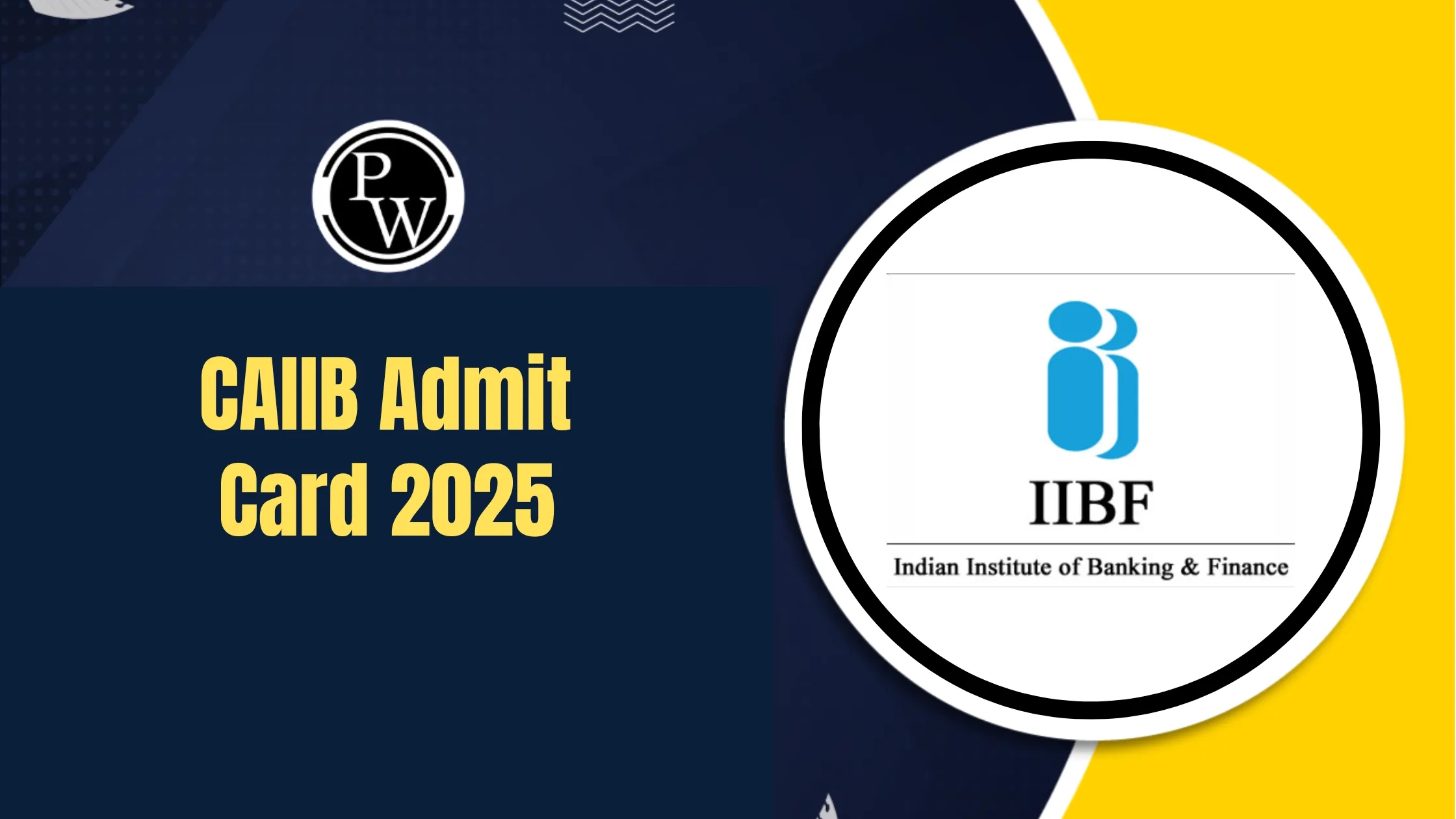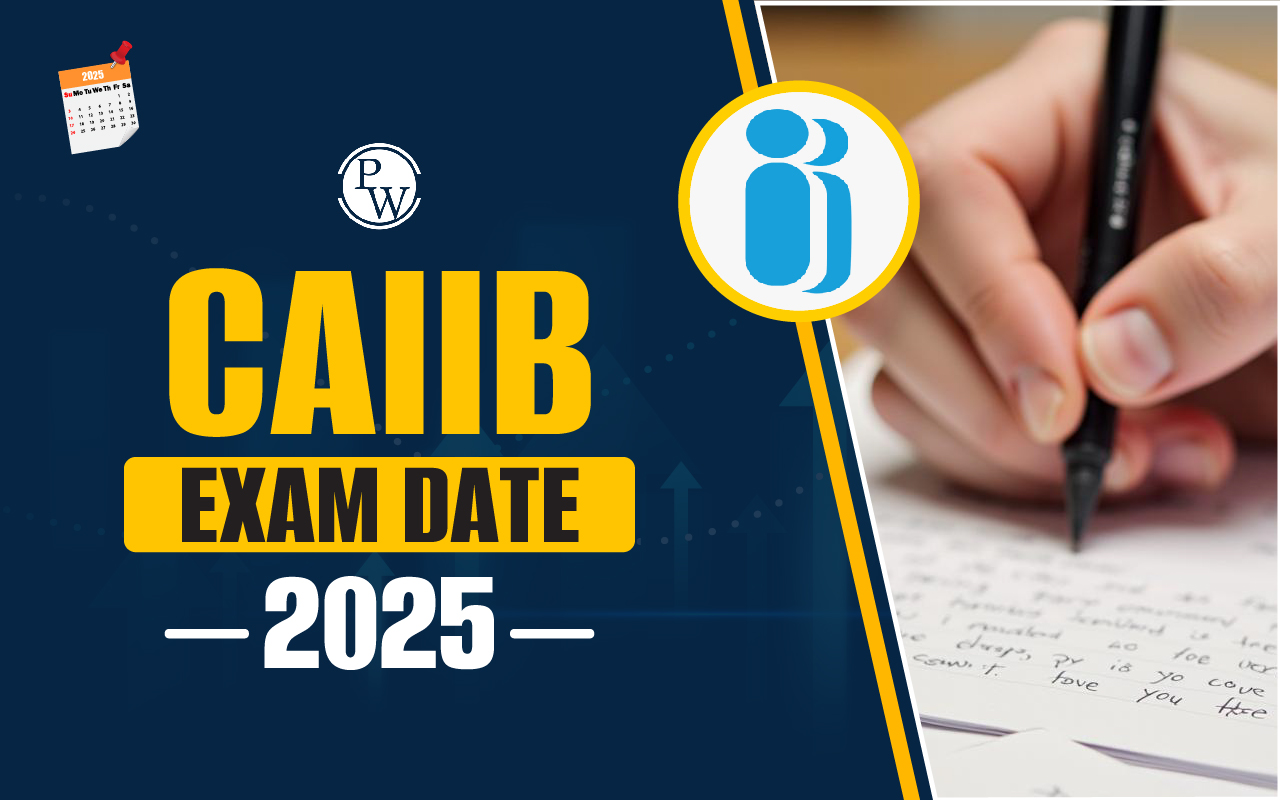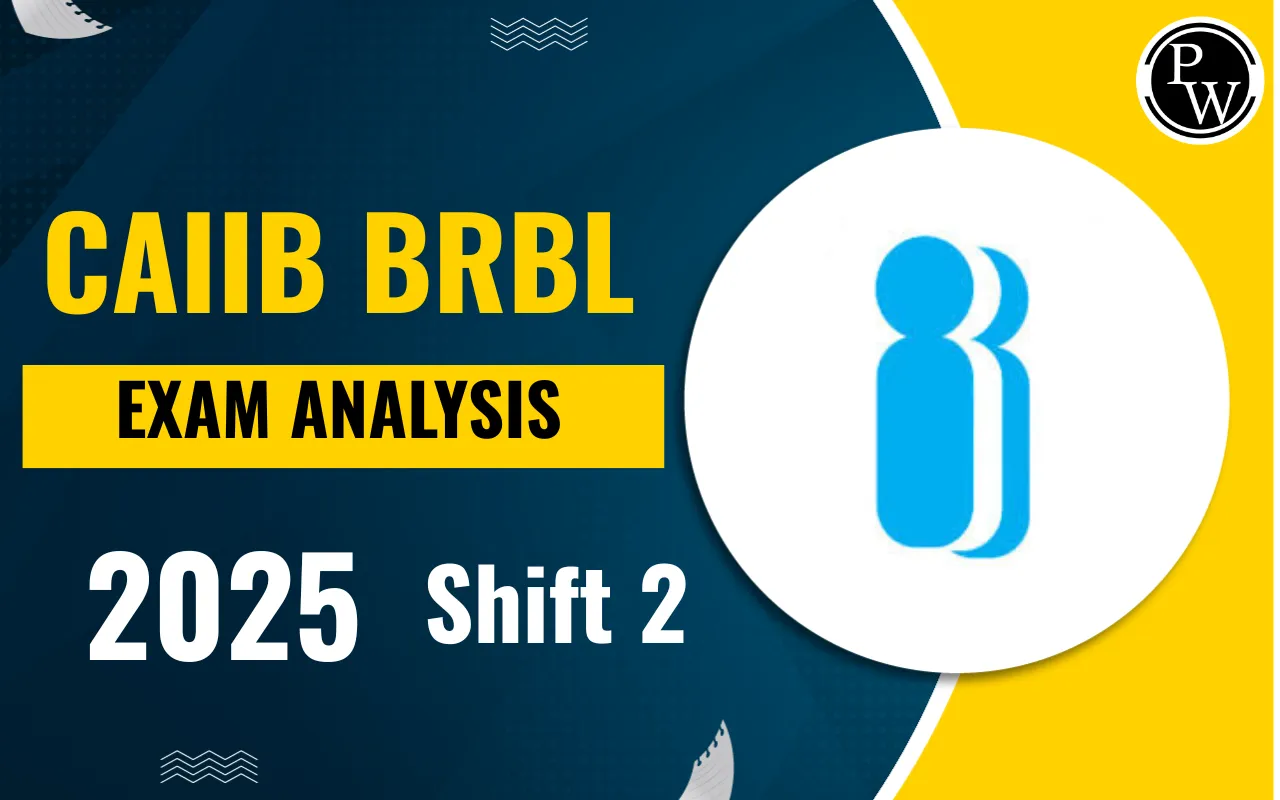
CAIIB ABFM Preparation Tips 2025: The CAIIB ABM Topic-Wise Consideration and Preparation Strategy serves as a valuable guide for candidates gearing up for the CAIIB ABFM 2025 exam. To prepare effectively, aspirants need to understand the weightage of each subject and adopt the right approach accordingly. This focused strategy on subject emphasis can significantly boost a candidate’s performance in the exam.
The CAIIB Advanced Business and Financial Management (ABFM) paper is the third compulsory paper in the CAIIB exam. This highlights the topic-wise distribution of marks for the Advanced Banking paper and offers useful tips to help candidates prepare efficiently.
CAIIB ABFM Preparation Tips
Advanced Business and Financial Management (ABFM) is one of the most important compulsory papers of CAIIB 2025. Candidates appearing for the ABFM Exam must be aware of the detailed subject-wise syllabus to understand the questions properly. In the table below, we have given the detailed CAIIB ABFM Syllabus 2025.
Module A: The Management Process
CAIIB ABFM Module A consists of several sections, including the Basics of Management, Planning, Organizing, etc. Module A- The Management Process topics bifurcation is provided below.
|
Paper 3- Module A: The Management Process |
|
|
Topic |
Subtopics |
|
Basics of Management |
Definition of Management – The Management Process – Functions of Management – Importance of Management – Management Thoughts & Approaches – Management Challenges & Opportunities – Introduction to Strategic Management – Business Environment Analysis |
|
Planning |
Fundamentals of Planning – Steps in Planning – Importance of Planning – Advantages and disadvantages of planning – Management by Objectives – Plan Components – Contingency planning – Forecasting & Decision Making |
|
Organizing |
Introduction and Fundamentals of Organizing – Importance of Organisation – Stages in Organising Process – The Organising Process – Principles of organizing – Types of Organisations – Organisation structure – Organisation charts and manuals – The Organisation culture – Authority & Responsibility – Key Issues in Organisation Structure – Organisational Change – Conflict Dynamics |
|
Staffing |
Functions of Staffing – Objectives of staffing – Nature of staffing – Facets of staffing – Significance of staffing – System approach to staffing – Recruitment – Selection – Training – Retention and development – Knowledge and learning management – Performance Appraisal – Human Resource Development |
|
Directing |
Characteristics of directing – Importance of directing – Elements of directing – Leadership – Motivation – Communication – Supervision |
|
Controlling |
Basics of Controlling – Characteristics of controlling – Advantages of controlling – Limitations of controlling – Types of control management – Control process – Relation between planning and control – Control Techniques – Control technique and Information Technology |
Module B: Advanced Concepts of Financial Management
CAIIB Module B consists of several topics, including Sources of Finance and Financial Strategies, Capital Investment Decisions, Adjustment of Risk and Uncertainty in Capital Budgeting Decisions, etc. In the table below, we have provided the detailed Module B: Advanced Concepts of Financial Management.
|
Paper 3- Module B: Advanced Concepts Of Financial Management |
|
|
Topic |
Subtopics |
|
Sources of Finance and Financial Strategies |
Equity Capital – Internal Accruals – Preference Capital – Term Loans – Debentures – Alternative Financing Strategies in the Context of Regulatory Requirements |
|
Financial and Operating Leverages |
Financial Leverage – Degree of Financial Leverage and its Behaviour – Operating Leverage – Degree of Operating Leverage and its Behaviour – Combined or Total Leverage |
|
Capital Investment Decisions |
Objective of capital investment decisions – Estimation of project cash flows – Forecasting and its relation to regulation of capital for short, medium and long-term periods – Relationship between sales, production and other functional budgets – Cash Forecasts – Cost analysis for projects – Methods of Investment appraisal – Social Cost Benefit Analysis |
|
Capital Budgeting for International Project Investment Decisions |
Foreign Investment Analysis – Special Considerations-Foreign & Home Currency Cash Flows – Foreign Currency Discount Rates Computation – International Portfolio Investment – Institutional Constraints – Direct and Indirect Channels for International Portfolio Investment – Exchange and Country Risk – Return and Risk of Foreign Investment – Capital Asset Pricing model – Arbitrage pricing theory – International Capital Budgeting Issues involved in overseas projects – Approaches for evaluation of overseas projects – Evaluation methods – Impact of transfer pricing |
|
Adjustment of Risk and Uncertainty in Capital Budgeting Decision |
– Sources & Perspectives on Risk – Sensitivity Analysis – Scenario Analysis – Hillier Model – Simulation Analysis – Decision Tree Analysis – Corporate Risk Analysis – Managing Risk – Project Selection Under Risk – Risk Analysis in Practice |
|
Decision Making |
Decision Making using Cost-Volume-Profit (CVP) Analysis – Decision Making using Relevant Cost Concepts – Decision Making using Activity Based Costing – Ethical and Non-Financial Considerations Relevant to Decision Making |
Module C: Valuation, Mergers & Acquisitions
The table below provides the complete details of the CAIIB Module C, which covers several topics like Corporate Valuations, Discounted Cash Flow Valuation, Mergers, Acquisitions and Restructuring, Deal structuring and financial strategies, etc.
|
Paper 3- Module C: Valuation, Mergers & Acquisitions |
|
|
Topic |
Subtopics |
|
Corporate Valuations |
Approaches to Corporate Valuation – Adjusted Book Value Approach – Stock and Debt Approach – Direct Comparison Approach – Discounted Cash Flow Approach – Steps involved in valuation using DCF Approach |
|
Discounted Cash Flow Valuation |
Estimating Inputs – Approaches to Discounted Cash Flow Models – Various Discounted Cash Flow Models – Dividend Discount Model – Applicability of the Dividend Discount Model |
|
Other Non-DCF valuation models |
Relative valuation model – Equity Valuation Multiples Model – Enterprise value multiples Model – Choosing the right multiples – Book value approach Model – Stock and debt approach |
|
Special cases of valuation |
Intangibles –Brand, Human valuation etc. – Real estate Firms – Start-up firms – Firms with negative or low earnings – Financial Service companies – Distressed firms – Valuation of cash and cross holdings – Warrants and convertibles – Cyclical & non-cyclical companies – Holding companies – E-commerce firms |
|
Mergers, Acquisitions and Restructuring |
Types of Transactions – Reasons for Merger – Mechanics of a Merger – Costs and Benefits of a Merger – Exchange Ratio in a Merger – Purchase of a Division / Plant – Takeovers – Leveraged Buyouts – Acquisition Financing – Business Alliances – Managing Acquisitions – Divestitures – Holding Company – Demergers |
|
Deal structuring and financial strategies |
– Negotiations – Payment and legal considerations – Tax and accounting considerations – Tax reliefs and benefits in case of Amalgamation in India – Financial reporting of business combinations – Deal Financing – Financing of cross-border acquisitions in India |
Module D: Emerging Business Solutions
CAIIB ABFM Module D consists of several sections, including the Hybrid Finance, Private Equity and Venture Capital, Private Intelligence, Business Analytics as Management Tool, etc. Module D- Emerging Business Solutions topics bifurcation is provided below.
|
Paper 3- Module D: Emerging Business Solutions |
|
|
Topic |
Subtopics |
|
Hybrid Finance |
Advantages and disadvantages of Hybrid securities – Types of hybrid securities – Preference Share Capital – Features of Warrants – Features of Convertible Debentures – Differences between Warrants and Convertible debentures – Valuation of Warrants – Valuation of Compulsorily Convertible (Partly or fully) Debentures – Objective of issuing Warrants and Convertible debentures – Features of Foreign Currency Convertible Bond (FCCB) – Mezzanine Financing – Innovative Hybrids |
|
Start-up Finance |
– Benefits to startup under the Startup Plan – Startup definition in India – Challenges faced by Startups – State Startup Policy – Pitch Presentation – Programmes and competitions for startups – Tax exemptions – Funding – Investor’s outlook in Startups – Funding schemes and programmes – International challenges and bridges |
|
Private Equity and Venture Capital |
– Characteristics of Venture Capital Investments – Characteristics shared by Private Equity and Venture Capital as well as their key distinctions – Financing options available through Venture Capital – Investment in Private Equity – Benefits obtained through private equity – Drawbacks to the practice of private equity – Due diligence – Exit Strategies |
|
Artificial Intelligence |
– History of Artificial Intelligence – Applicability of Artificial Intelligence – Artificial Intelligence in Banking and Finance – The future scope of Artificial Intelligence – Neural Networks – Control Theory and Cybernetics – Rational Agents – Motion and Manipulation – Tools and Techniques of Artificial Intelligence – Artificial Intelligence and Morality |
|
Business Analytics as Management Tool |
– Essentials of Business Analytics – Types of Analytics – Elements of Business Analytics – Big Data Analytics – Web and Mobile Analytics – Comparing web vs. mobile Analytics – Importance of Business Analytics |
|
Green and Sustainable Financing |
– ISO Standards for Green Finance – Building Green Finance – International Best Practices towards Green Finance – Public Policy in India – Progress of Green Finance in India – Challenges and way forward – Growth of Regulatory Framework – National Efforts towards Green and Sustainable Financing – RBI Views on Climate Risk and Sustainable Finance |
|
Special Purpose Acquisition Company |
– Advantages of SPAC – Disadvantages of SPAC – SPAC Formation and Timelines – The SPAC Merger – Stakeholders – Characteristics of SPACs – Process – SPAC Capital Structure – Trust Account – Warrants – Forward Purchase – IPO Agreements – De-SPAC Process |
CAIIB ABFM 2025 Preparation Tips
Clearing CAIIB ABFM in 2025 requires a balance of theory, numerical practice, and case study analysis. By following a module-wise strategy, solving previous year questions, and attempting CAIIB mock tests ABFM, you can build both speed and accuracy.
1. Understand the CAIIB ABFM Syllabus 2025
Before making a CAIIB ABFM study plan, it is important to go through the updated CAIIB ABFM syllabus. The exam mainly covers the following areas:
-
Module A: Understanding Business Environment
-
Module B: Business Models & Strategies
-
Module C: Advanced Financial Management
-
Module D: Case Studies in Business & Finance
Knowing the syllabus helps in identifying ABFM important topics and dividing your preparation time accordingly.
2. Module-wise Strategy for CAIIB ABFM 2025
Module A – Business Environment
-
Focus on macroeconomic factors, industry analysis, and regulatory frameworks.
-
Revise frequently asked ABFM previous year questions to identify scoring areas.
🔹 Module B – Business Models & Strategies
-
Understand different business models, corporate strategies, and growth frameworks.
-
Use CAIIB mock tests ABFM to apply concepts to practical questions.
Module C – Advanced Financial Management
-
This module is calculation-heavy. Focus on capital structure, cost of capital, project finance, and risk management.
-
Practice ABFM case study questions to improve problem-solving speed.
Module D – Case Studies
-
Go through real-world ABFM case study questions from previous year papers.
-
Work on time management since case studies are lengthy and require analytical skills.
3. CAIIB ABFM Study Plan 2025
Here’s a sample CAIIB ABFM study plan for 8 weeks (60 days):
-
Weeks 1–2: Cover Module A basics + practice MCQs daily.
-
Weeks 3–4: Study Module B, revise key theories, attempt small case studies.
-
Weeks 5–6: Focus on Module C numerical topics + take sectional CAIIB mock tests ABFM.
-
Weeks 7–8: Revise Modules A–D, solve ABFM previous year questions, and attempt at least 5 full-length mock tests.
4. Time Management for CAIIB ABFM
One of the biggest challenges is completing the paper on time. Follow these time management for CAIIB tips:
-
Allocate 60–70 seconds per MCQ and skip tough ones for review later.
-
Dedicate extra time to case study questions, as they need calculations.
-
Practice with a stopwatch while solving CAIIB mock tests ABFM.
5. CAIIB ABFM Strategy for Working Professionals
If you are a full-time banker, balancing job and exam prep can be tricky. Here’s a CAIIB working professionals plan:
-
Daily Routine: Spend 1–2 hours on weekdays and 4–5 hours on weekends.
-
Use short notes and mind maps for quick revisions during breaks.
-
Attempt ABFM previous year questions after office hours to strengthen concepts.
-
Focus more on high-weightage ABFM important topics if time is limited.
6. Best Resources for CAIIB ABFM 2025
-
Official IIBF books for CAIIB ABFM.
-
CAIIB ABFM mock test series available online.
-
Compilations of ABFM case study questions and previous year papers.
-
Short revision notes and YouTube explainer sessions for tricky concepts.
CAIIB ABFM Preparation Tips 2025 FAQs
What are the CAIIB ABFM Preparation Tips 2025?
How should I begin preparing for the CAIIB ABFM Exam?
Is it possible to clear the CAIIB ABFM Exam on the first try?
Should I follow the module-wise CAIIB ABFM Preparation Tips 2025?









